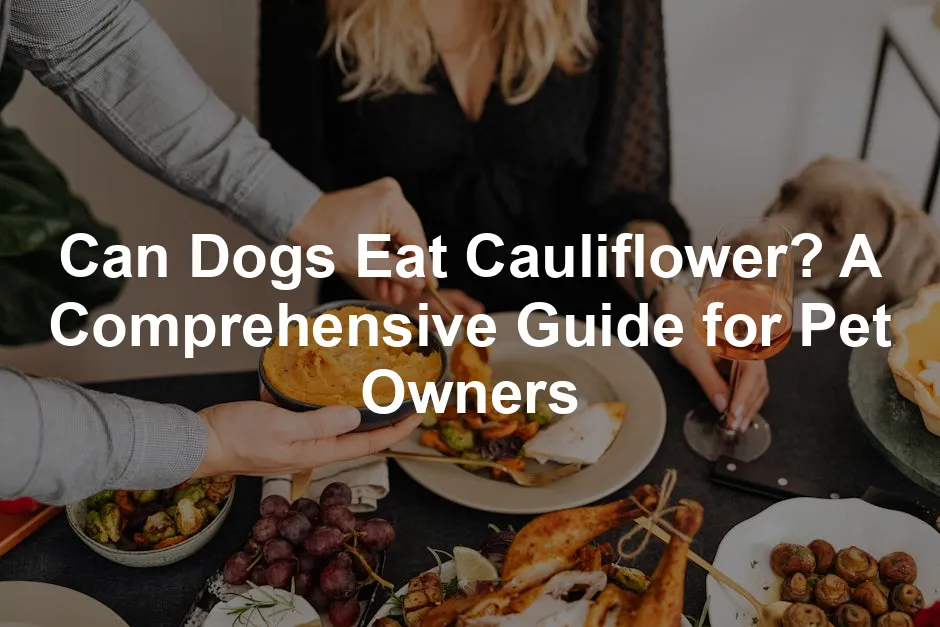Introduction
Can dogs eat cauliflower? Absolutely! Understanding what our furry friends can eat is vital for their health. Knowing which foods are safe and nutritious helps pet owners make informed choices. This article will examine the safety, benefits, and guidelines for feeding cauliflower to dogs.
Summary and Overview
Cauliflower is a nutritious vegetable option for dogs. It’s packed with vitamins C, K, and B6, along with potassium and manganese. The high fiber content promotes healthy digestion and can help maintain a healthy weight.
However, pet owners should be aware of potential concerns. Some dogs may experience digestive upset or gas after eating cauliflower. Allergies, while uncommon, can occur. Always serve cauliflower in moderation, and consult your veterinarian for personalized advice.
Incorporating cauliflower into your dog’s diet can be beneficial when done correctly. This guide aims to provide you with the knowledge you need to safely share this veggie with your pup.
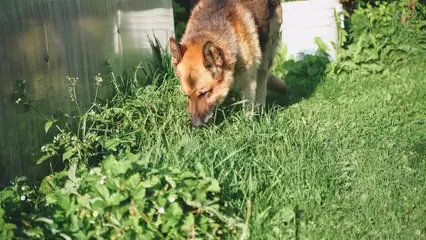
And speaking of safe treats, why not consider some Dog Training Treats? They can be a great way to reward your pup while ensuring they get the nutrition they need!
Nutritional Benefits of Cauliflower for Dogs
Key Nutrients
Cauliflower is a powerhouse of nutrition for your pup. It’s rich in essential vitamins like C, K, and B6. Vitamin C boosts the immune system, while K supports bone health. B6 plays a role in brain function and metabolism.
This vegetable also contains important minerals such as potassium and manganese. Potassium helps maintain a healthy heart, while manganese contributes to bone health.
Don’t forget about fiber! It aids in digestion and can help manage your dog’s weight. It keeps their tummy happy and promotes regular bowel movements. Additionally, cauliflower is packed with antioxidants. These compounds help protect your dog from harmful free radicals, supporting overall health.

For those looking to enhance their dog’s nutrition further, consider a Dog Supplement for Joint Health. These supplements can help ensure your dog’s joints stay strong and healthy, especially as they age!
Low-Calorie Treat
Looking for a guilt-free treat for your furry friend? Cauliflower is a fantastic low-calorie alternative to commercial dog treats. One cup of chopped cauliflower has about 27 calories.
Switching to cauliflower can help manage your dog’s weight. Since it’s low in calories and high in fiber, it can make your dog feel full without adding extra pounds. This is particularly beneficial for pups who need to lose weight or maintain a healthy figure.
For more information on nutritious vegetables, check out this guide on can dogs eat carrots.
And while you’re at it, consider investing in a Dog Feeding Mat to keep the mess to a minimum during mealtime!
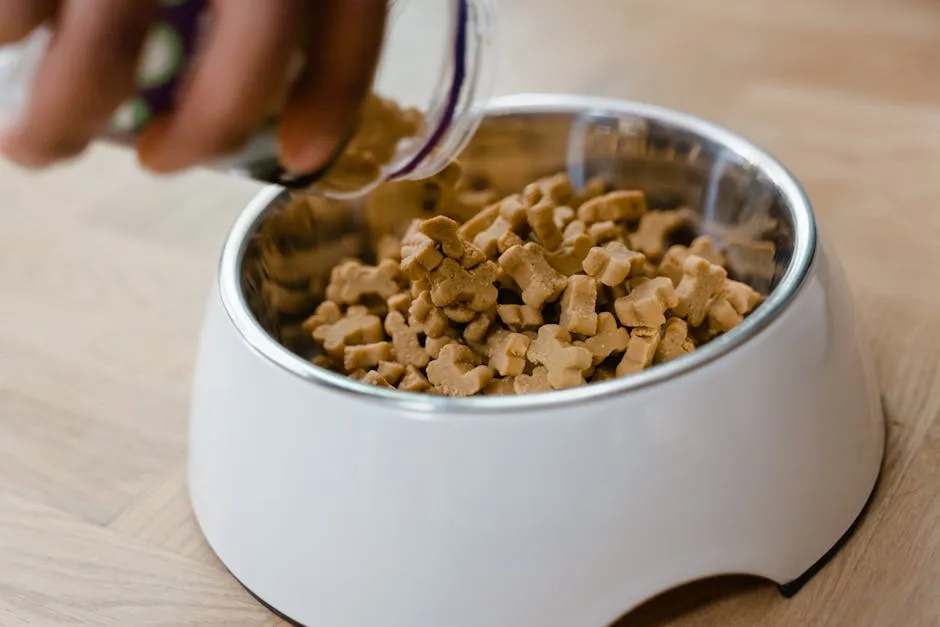
Is Cauliflower Safe for Dogs?
General Safety
Yes, cauliflower is safe and non-toxic for dogs. Many veterinarians recommend it as a healthy snack. However, moderation is key. Too much cauliflower can lead to digestive issues like gas and bloating.
Start with small amounts to see how your dog reacts. If they tolerate it well, you can gradually increase the quantity. Always monitor their response and consult your vet with concerns.
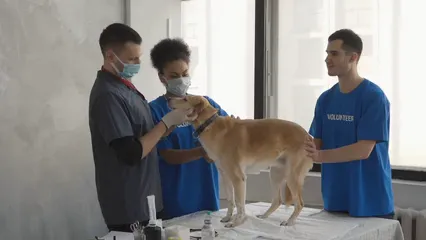
For those adventurous dog owners, a Pet First Aid Kit is a must-have for any outing. You never know when a little mishap might happen!
Allergies and Sensitivities
While cauliflower is generally safe for dogs, some can develop allergies. This is uncommon, but it can happen. If you notice any unusual signs after introducing cauliflower, it’s essential to take note. Symptoms of an allergy can include itching, swelling, or digestive upset. Watch for changes in your dog’s behavior, like excessive scratching or gastrointestinal issues.
If your dog experiences difficulty breathing, immediate veterinary attention is crucial. Always start with a small portion when introducing new foods. This way, you can monitor their reaction to cauliflower closely.

How to Prepare Cauliflower for Dogs
Cooking Methods
Cooking cauliflower offers several advantages. Steaming or boiling helps make it easier to digest. Raw cauliflower can be tough on their stomachs and may lead to gas. Cooking breaks down tough fibers, reducing these risks. Plus, it enhances the flavor, making it more appealing for your pup.
When preparing cauliflower, always avoid adding any seasonings or oils. Cooking it plain ensures that your dog enjoys the health benefits without any harmful additives.
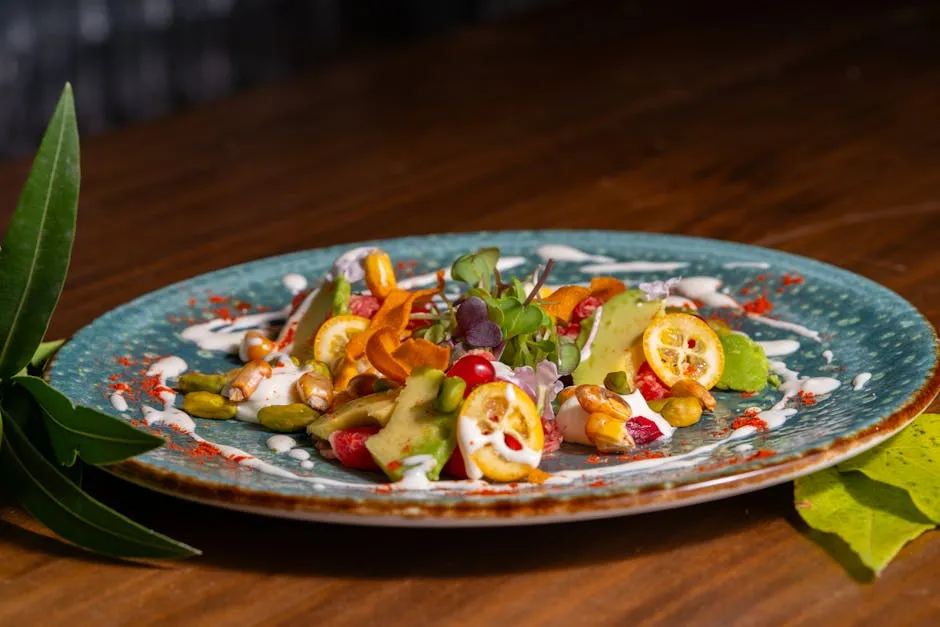
Speaking of cooking, if you’re looking to whip up some homemade dog treats, a Dog Food Recipe Book can be a great guide to help you create delicious and nutritious meals for your furry friend!
Serving Suggestions
When serving cauliflower, cut it into small, bite-sized pieces. This prevents choking and makes it easier for your dog to chew. You can mix cooked cauliflower with their regular dog food for added nutrition. Alternatively, use it as a healthy treat during training sessions.
Offering it alongside their favorite meals can encourage more balanced eating habits while keeping mealtime exciting.

How Much Cauliflower Can I Feed My Dog?
Portion Guidelines
When feeding your dog cauliflower, portion sizes depend on their size. For small dogs, like Chihuahuas or Yorkies, a few small florets are sufficient. Medium-sized dogs, such as Beagles or Bulldogs, can handle approximately half a cup of cooked cauliflower. Large breeds, like Labradors or Golden Retrievers, may enjoy up to a full cup.
Regardless of size, remember that treats, including cauliflower, should only make up about 10% of your dog’s daily diet. This balance ensures your pup gets the nutrients they need without overindulging.
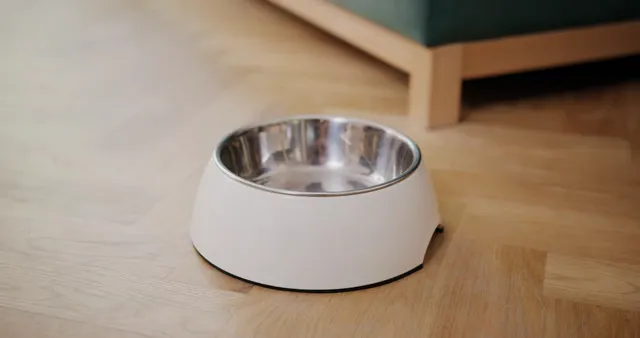
And while we’re on the subject of feeding, make sure you have a reliable Dog Food Storage Container to keep their food fresh and safe from pests!
Frequency of Feeding
Cauliflower can be included in your dog’s diet once or twice a week. This helps keep their diet varied without overwhelming their digestive system. Introducing cauliflower gradually allows you to monitor your dog’s tolerance and reaction. If they enjoy it and show no signs of digestive upset, continue offering it in moderation.

Other Vegetables Safe for Dogs
List of Alternatives
If your dog enjoys cauliflower, consider these other dog-safe vegetables:
- Carrots: Great for dental health and low in calories.
- Green Beans: Rich in vitamins and a crunchy snack.
- Broccoli: High in fiber and vitamins C and K.
- Sweet Potatoes: Full of nutrients and a tasty treat.
- Pumpkin: Excellent for digestion and overall health.
These vegetables provide various nutritional benefits, enhancing your dog’s diet with vitamins, minerals, and fiber.

For more details on safe vegetables for dogs, check out this article on can dogs eat broccoli.
Comparison with Cauliflower
While cauliflower is nutritious, other vegetables have unique advantages. For instance, carrots are excellent for eye health due to their beta-carotene content. Green beans are low-calorie and can aid in weight management. However, some vegetables, like broccoli, can cause gas in dogs, similar to cauliflower. Moderation is key with all veggies to prevent digestive issues. Balancing these options will keep your dog’s diet both nutritious and exciting.

Potential Risks and Considerations
Digestive Issues
While cauliflower is generally safe for dogs, it can cause digestive problems, especially when raw. Some dogs may experience gas, bloating, or diarrhea after eating it. These issues arise due to the high fiber content in cauliflower. To minimize discomfort, introduce this vegetable slowly. Start with just a small piece and observe how your dog reacts.
After adding cauliflower to your dog’s diet, keep an eye on their behavior. Look for any signs of distress, such as excessive gas or changes in stool consistency. If these issues occur, reduce the amount fed or consult your veterinarian.

Toxic Ingredients to Avoid
When preparing cauliflower for your dog, avoid adding harmful ingredients. Common toxic foods include garlic and onions. Both can be very harmful to dogs and may cause serious health issues. Other ingredients like salt and seasonings should also be excluded, as they can upset your dog’s stomach.
Always serve cauliflower plain and unseasoned. This ensures your furry friend enjoys a healthy and safe treat without any risks.

Conclusion
In summary, feeding cauliflower to your dog can be safe and beneficial, provided it’s done thoughtfully. Always introduce new foods gradually and keep portions moderate. Monitoring your dog’s reaction is crucial to avoid any digestive upset. If you have concerns about your dog’s diet, it’s always best to consult your veterinarian for tailored advice.

FAQs
Can dogs eat raw cauliflower?
Yes, but it may cause gas. Raw cauliflower can be tough to digest for some dogs.
How can I tell if my dog is allergic to cauliflower?
Watch for signs like itching, swelling, or digestive upset.
Is cooked cauliflower better for dogs than raw?
Yes, cooked cauliflower is easier to digest and can reduce gas.
What should I do if my dog eats too much cauliflower?
Monitor for signs of distress. Consult your vet if you notice any unusual symptoms.
Can I mix cauliflower with other foods?
Yes, but ensure all ingredients are dog-safe and free of harmful additives.
Are cauliflower leaves safe for my dog?
Yes, but they may be harder to digest. Stick to florets for easier consumption.
What other vegetables can I feed my dog?
Safe options include carrots, green beans, and sweet potatoes, among others.
Please let us know what you think about our content by leaving a comment down below!
Thank you for reading till here 🙂
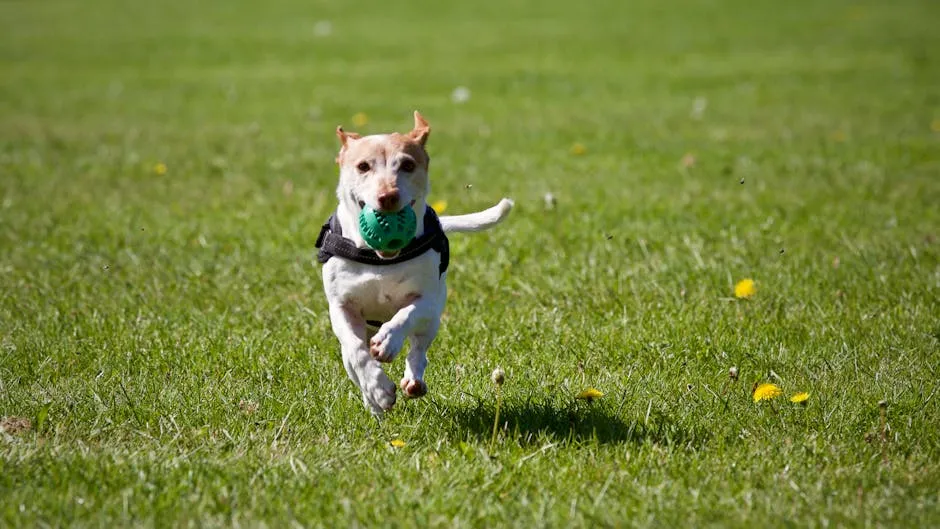
If you’re looking for some fun for your pup, check out the Dog Toys available on Amazon. Keeping your dog entertained is just as important as their diet!
All images from Pexels

